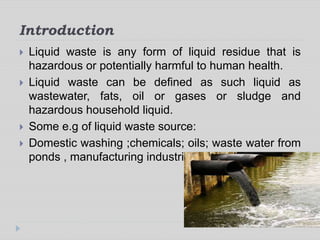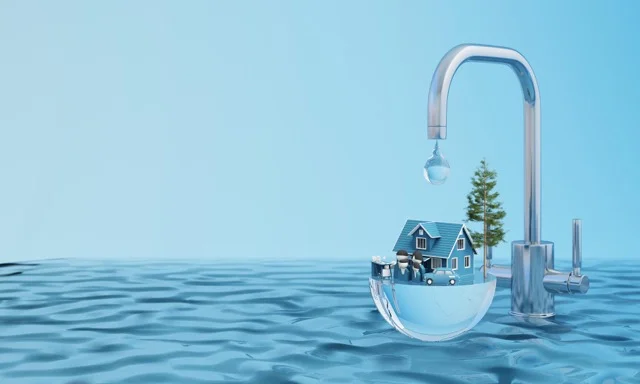Reclaim Waste Fundamentals Explained
The Best Strategy To Use For Reclaim Waste
Table of ContentsThe Basic Principles Of Reclaim Waste The 10-Minute Rule for Reclaim WasteThe smart Trick of Reclaim Waste That Nobody is Talking AboutGetting My Reclaim Waste To WorkReclaim Waste Things To Know Before You Buy
Residential sewer waste refers to the waste and products from a residential septic container. The proper administration and disposal of domestic sewer waste require liquid waste to be transferred to a sewer therapy plant where the appropriate approaches and tools are applied to detoxify and dispose of waste.
Commercial waste typically consists of potential dangers, such as combustible products or a combination of liquid and strong waste items, and calls for an advanced and comprehensive disposal process. The disposal of business waste generally entails the purification of waste before transportation to make sure secure and proper disposal. Industrial waste is developed from byproducts and drainage of industrial procedures and manufacturing.
This sort of waste can not make use of the exact same sewer management transport or procedures as septic or commercial liquids. The industrial waste management process requires the evaluation and screening of liquid waste prior to it undertakes the disposal procedure (liquid waste removal). Drainage waste is the fluid waste that originates from drainage and excess stormwater in extremely inhabited areas or cities
Drainage waste can trigger contamination and flooding if not dealt with correctly. Guaranteeing proper waste management can prevent calamities and minimize environmental harm.
The Only Guide for Reclaim Waste
Get in touch with PROS Services today to find out about our waste administration and disposal solutions and the proper methods to look after the fluid waste you generate.
(https://moz.com/community/q/user/reclaimwaste1)This supposed 'wastewater' is not just a crucial resource however, after therapy, will be launched to our land, waterways or the sea. Utilized water from commodes, showers, baths, cooking area sinks, washings and commercial processes is recognized as wastewater.

water used to cool down equipment or clean plant and tools). Stormwater, why not try these out a type of wastewater, is runoff that moves from agricultural and city areas such as roofing systems, parks, yards, roads, courses and rain gutters into stormwater drains pipes, after rainfall. Stormwater streams without treatment directly to neighborhood creeks or rivers, ultimately getting to the ocean.
The 20-Second Trick For Reclaim Waste
In Queensland, the majority of wastewater is dealt with at sewer treatment plants. Wastewater is transported from domestic or industrial sites with a system of sewers and pump stations, called sewerage reticulation, to a sewer therapy plant. Neighborhood governments build, maintain and run most sewage therapy plants. Operators are certified under the Environmental Management Act 1994 to discharge cured wastewater at an acceptable environmental standard into waterways.
The Department of Natural Resources recommends local federal governments regarding managing, operating and keeping sewage systems and therapy plants. In unsewered areas, city governments may need homeowners to set up individual or family sewer therapy systems to treat domestic wastewater from bathrooms, kitchen areas, shower rooms and laundries. The Division of Natural Resources authorizes the use of household systems when they are proven to be effective.
In some new class, treatment of some stormwater to get rid of clutter, sand and gravel has actually started using gross contaminant traps. Wastewater therapy happens in four phases: Removes strong issue.
Wastewater after that flows right into huge storage tanks where solids resolve and are eliminated as sludge. Grease and scum are skimmed from the surface. Makes use of tiny living organisms called micro-organisms to break down and get rid of staying liquified wastes and fine bits. Micro-organisms and wastes are incorporated in the sludge. Eliminates nitrogen and phosphorus nutrients that can cause algal blooms in our rivers and threaten water life.
Things about Reclaim Waste
Nutrient removal is not available in all sewer therapy plants due to the fact that it calls for expensive specialist devices. It is ending up being much more typical in Queensland. Clear liquid effluent created after treatment may still contain disease-causing micro-organisms. If this effluent is launched right into waterways such as rivers or the sea, the micro-organisms will at some point pass away out.

The majority of wastewater streams right into the sewerage system. Under the Act, neighborhood governments carry out authorizations and licences for environmentally pertinent activities (ERAs) entailing wastewater releases that may have a regional impact.
The Ultimate Guide To Reclaim Waste
Tracking supplies accurate info regarding water top quality and can confirm that permit conditions are being satisfied. The information acquired via tracking provides the basis for making water high quality decisions.